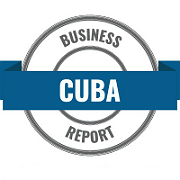Today almost 30% of Cuba’s land mass is used for crop cultivation. Through history, agriculture has played a very important role and contributed significantly to the Cuban economy. Approximately 20% of the population is employed in the sector. As to contributor to GDP, agriculture factored about 7% of GDP in 2000 but has declined to 3.8 – 4% of GDP in recent years. Production has declined so much over the last several years, it has forced the country to rely heavily on food imports. In light of this, the government has sought new ways to reform food production, to modernize and develop sustainable agriculture.
The government’s chief ambition is to reduce the need for agricultural imports by increasing production. Presently Cuba imports 80% (about US$1.5 billion annually) of its domestic food requirements. Aspects of the American embargo against Cuba – such as the ability to obtain credit to trade with its closest market (the U.S.) necessitates importing from countries such as Canada and Vietnam. Rice, flour, wheat, meslin, corn, powdered milk, peas, dried and shelled, soybean oil, chicken and frozen boneless bovine cuts account for most of agricultural imports.
Cuba’s agricultural produce includes cassava (used to make sorbitol), citrus and tropical fruits (oranges, grapefruits, plantains, bananas, mango, papaya, pineapple, avocado, guava, coconut and anonaceae, coffee, potatoes, rice, sugar and tobacco). Cuba was once the world’s largest producer of sugar but over the years, the production of sugar has also decreased. The Cuban government’s economic reforms have included plans to reform the sugar industry and open it up to direct foreign investment.
It is not only the sugar industry that is opening for joint ventures with foreign investors. As early as 1991, the production and processing of citrus fruits became one of the first foreign investment opportunities in the agriculture sector. Mini factories and home businesses have emerged as a result of the reforms of President Raul Castro. Fruits such as the pineapple are now shipped to Spain, France and Italy. Cuba is a significant exporter of citrus products, coffee, tobacco, and processed fruit products mainly to the European market.
Challenges facing the agricultural sector in Cuba include obsolete farming technology and equipment, technical capacity, and weather disturbances (climate change). A sustainable agricultural model should include new technology investment and enhanced coordination along value chains.
Cuba’s tobacco farms grow some of the best tobacco (if not the best) tobacco in the world. Tobacco is the third largest export of Cuba. Between May 2015 to May 2016, tobacco exports amounted to $86.4 million USD. To meet the growing demand for the product, the Cuban company Tabaco de Cuba (Tabacuba) began an extensive program in late 2015 early 2016 to modernize its industrial facilities, to meet the demands of the local and international markets.
The government of Cuba has recognized the need to efficiently manage the rich resources of the Island to boost the production and feed its people. A significant portion of the Cuban population still has to struggle to obtain quality produce from its own farm lands. Heavy imports from other nations are actually a burden to the country’s economy. Cuban Associations such as Agricultural and Forestry Technicians (ACTAF) and others have taken steps to strengthen the agricultural production sector through diversification.
Effective steps are being undertaken by the Ministry of Agriculture (MINAG) to enhance food security, boost its quality, variety, and the nutritional value of Cuban produce. Increasing agricultural productivity is vital and includes not only policies of modernization, but must also ensure sustainability. Recent examples of modernization such as the installation of a new rice drying plant in Pinar de Rio increases production and enables efficient transportation of rice to the far western provinces.
Today, some 3,600 cooperatives such as UBPCs (Unidad Básica de Producción Cooperativa) and CPAs (Cooperativa de Producción Agropecuaria) are in existance. ‘Organoponicos‘ (urban organic farming) are also contributing to increased production in agriculture. Part of this effort to increase agricultural production has involved the conversion of state farms into cooperatives. Workers on the farm receive wages which are directly tied to the productivity of the collective. There is also more managerial autonomy with the workers’ participation in the management of the collective.
Cuba is a global leader in the production of organic agriculture and the world can learn much from this distinctively Cuban experiment. ‘Organoponicos‘ began to thrive out of a necessity prompted by the collapse of the Soviet Union and the economic embargo. Organic farming is a major contributor to agricultural production supplying the restaurants, the hotels and the markets for the people.
Crops grown at the organoponico farms include bananas, tomatoes, okra, beans, lettuce, eggplant and taro. Increased participation of this country’s population in organic modes of farming has provided a new ray of hope to the rest of world for enhancing production of crops with traditional techniques. Cuban agriculture has important agro-ecological lessons for the rest of the world looking to feed their populations. Cuba has been able to enhance its own organic farming techniques without falling for the heavy use of harmful fertilizers, pesticides and industrial farming techniques.

From our staff writers and editors.










